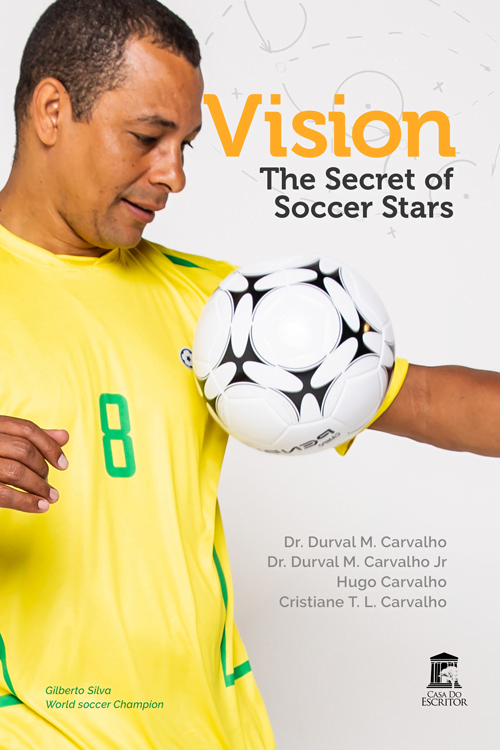
Vision - The Secret of the Soccer Stars (English Version)
Dr Durval Moraes de Carvalho
The analysis platforms of a soccer match have not yet included in their core the flaws and exceptional moves resulting from the visual efficiency of each athlete.
Soccer is a sport in which the visual system is not trained in the sport itself. The field is very large and in each situation the images reach the eyes in different regions of the retina. In basketball, from the beginning of its learning, vision is trained not to stick to the ball, and is free to create the moves. In soccer, due to several factors, in the beginning, the athlete is obliged to look fixedly at the ball to learn the skills, and only a few manage to free themselves and work the ball without depending on fixing it with their eyes, that is, mastering the ball with their peripheral vision. Those who are well endowed with this peripheral vision are different from the rest, and have the possibility of becoming soccer stars because they have more vision of the game and are more at ease in their plays. Their reflexes are faster.
Despite the importance of vision in soccer, ophthalmology has never given special attention to soccer players’ peripheral vision, because it deals with normal eyes, and ophthalmology is dedicated to treating sick eyes and pathologies. In this book, the functions of the neurosystem are also clarified, which facilitates the orientation for a better preparation of the visual system for soccer and other sports, as vision is the trigger of the motor system.
With this understanding, good plays and chances lost due to visual skills and incompetence will soon be monitored. Specific devices have been developed for the activation of the ocular muscles for athletes to prepare to enter the field. Devices to force the use of peripheral vision in all fundamentals of soccer, such as driving, dominance, kick, skill, heading and dribbling. These exercises will serve to teach and optimize each visual participation. In part, this preparation can also be carried out in the laboratory. The possibility of training the independence of visual fixation on the ball, in soccer, will make a worldwide difference in the future of this sport.











